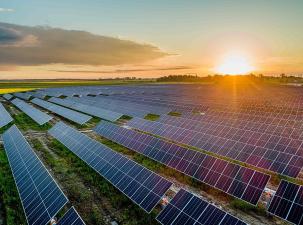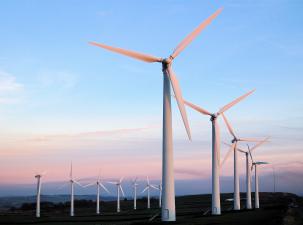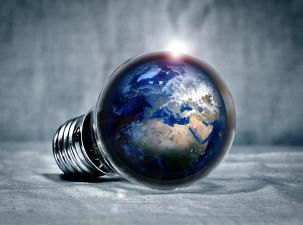RENEWABLE Energies
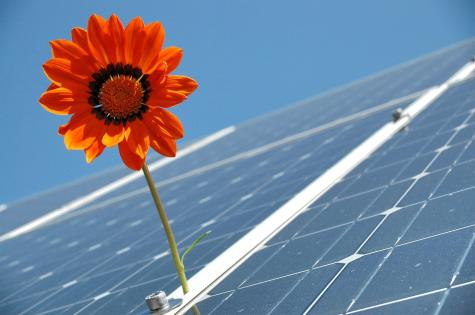
Renewable Energy Guide – The Energy Transition and the Shift from Fossil Fuels
Derived from natural unlimited resources, renewable energy has been hailed as the green alternative to the burning of fossil fuels. Unsustainable and dirty, the energy industry must adapt and invest in renewable technology in order to meet the increasing demands of energy globally, as well as reducing carbon emissions.
Better World Info’s ➡️ Platform for Renewable Energy boasts over 1,500 resources on solar power, wind energy, hydroelectricity, biofuels, important news sources, key portals and organisations, as well as green energy companies, challenges to the energy shift, and key issues within the industry.
Find excellent guides to related topics such as sustainability, the climate crisis, the Sustainable Development Goals, the COP Conferences, and over 6,000 resources on the fossil fuel industry and nuclear energy.
Despite the pressing need to switch to less harmful energy sources, renewable energy still only accounts for 30% of the world's energy. Increasing by 10% since 2011, the sector is growing quickly, and investments in new power generation is now dominated by renewable energies. In 2021, 70% of the $530 billion spent on new energy generation went to the renewable energy industry.
In order to dramatically cut our dependence on fossil fuels and adhere to CO2 emission guidelines, it is estimated that by 2050, 90% of our planet's energy supply must come from renewable energy. Some countries such as Iceland are already almost entirely reliant on electricity from renewable sources.
The shift to renewable energy helps reduce damage to the environment, cuts air pollution, creates jobs, and lessens inequalities.
“Energy is essential for development, and sustainable energy is essential for sustainable development” - Tim Wirth, former president of the UN Foundation.
For up to the minute updates from green energy experts make sure to follow our twitter lists on fossil fuel divestment and renewable energy. German speakers can visit our partner site Bessere Welt Info for an in-depth guide of over 1,700 resources on Erneuerbare Energien from a European perspective.
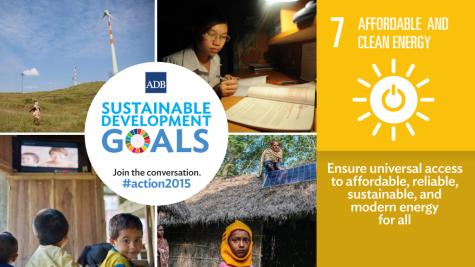
Renewable Energy Sources Explained
-
Solar Power – Leading the Renewable Boom
Commercialised more than 40 years ago, solar energy is the fastest growing renewable energy sector. The sun is the most abundant energy source on Earth, and solar technology has become much more affordable, however this clean energy source still only accounts for 5% of electricity generation worldwide.
The solar panel industry has created vast number of jobs, the panels are long-lasting, and can function for 4 decades. Solar also provides the cheapest electricity in history. It is estimated that solar electricity generation will surpass gas by 2026, and coal by 2027.
The potential for solar energy in the developing world is vast, as geographically they have optimal access to long uninterrupted days of sunlight. Lack of foreign investment and climate debt are huge barriers to unlocking the potential for solar development in many parts of the world.
China has emerged as the world's largest producer of solar electricity and is home to 15 of the world's largest solar plants. The USA, Japan, and India are following closely behind.
Discover more information on solar power plants, photovoltaics, feed-in tariffs, solar energy storage, the costs of solar energy installation, and important organisations.
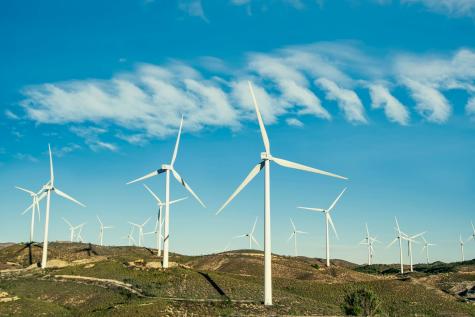
-
Wind Power – Turbines and Offshore Wind Farms
Wind energy is both cost effective and sustainable. Wind is the world's leading non-hydro renewable technology and as with solar, China takes first place as both onshore and offshore wind power generator. Wind power in China is responsible for over 40% of the electricity generated by wind worldwide.
Wind turbines can stand as tall as the Statue of Liberty and as technology gets more efficient and cheaper, harnessing the power of the wind is becoming more of an attractive option. The cost of producing electricity from wind has fallen 90% since the 1980’s.
Offshore wind generates more energy than onshore, however installation costs remain high. They can generate up to 15MW in comparison with onshore turbines which are limited to 5MW. Hornsea 2 in the UK is currently the world's largest offshore wind farm. The potential for offshore development remains largely unexploited due to high maintenance costs and unsuitable water depths.
The biggest onshore wind farm in the world is called the Jiuquan Wind Power Base in China and is home to 7,000 turbines with a capacity of 20GW. The growth of the wind sector is staggering, in 2020 there was a 56% global increase in energy capacity from the previous year. Wind energy is also important in the growing green employment sector. By 2030 it is estimated that wind energy will employ four million people.
Wind power also fits into the circular economy as turbines are easy to recycle once they have been decommissioned. Energy companies are able to turn blades into useful items for the community including bike shelters and children's playgrounds.
Considerations regarding wind energy include the visual impact of turbines, the intermittent nature of wind, noise pollution, disruption to natural habitats, and the potential danger for wildlife. Wind generation sites also tend to be in remote locations and therefore long transmission lines and expensive infrastructure is often needed to carry the electricity to populations.
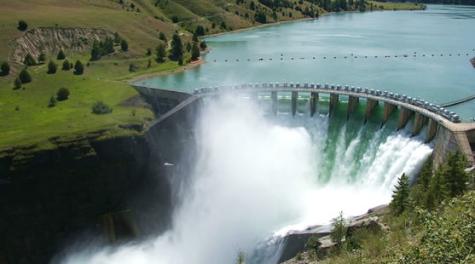
-
Hydroelectricity – Harnessing Water and Related Costs
Hydroelectric energy uses dams and reservoirs to harness the power of water in motion. It is the most common form of renewable energy, responsible for generating 70% of the world's renewable electricity and 30% of the world's total energy supply.
The world's largest hydroelectric plant is the Three Gorges Dam in China, with generators big enough to produce a gigantic 22.5GW of power.
Although the most reliable and consistent form of renewable energy, due to its nature, hydro power is highly vulnerable to the effects of climate change, namely drought.
There are many costs to be considered when turning to hydro power as a solution as although waterpower is clean there are very serious consequences to building such large-scale dams and hydro plants.
Large quantities of water and land are needed for projects to be feasible. The manmade reservoirs then drastically change the natural environment and landscape which often results in negative environmental effects. They reduce river flows, raise water temperature, reduce water quality, and cause sediment buildup. Some hydro plants have been found to be massive carbon and methane emitters due to the decomposing of flooded vegetation under water.
Manmade reservoirs also cause large scale displacement of communities. It is estimated that between 40 and 80 million people have been displaced directly as a result of dams and reservoirs. Communities that live downstream are affected even more severely with 472 million people suffering from food insecurity and flooding threatening their homes and livelihoods.
Due to their enormous cost and the various social and economic impacts, even countries with vast supplies of water are cautious to untap the full potential of hydroelectricity.
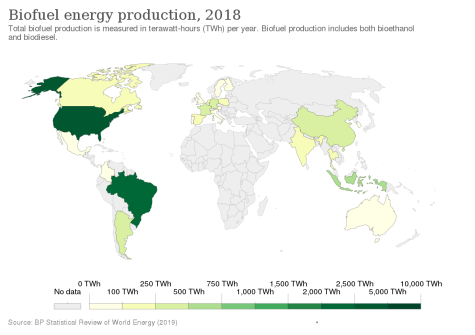
-
Biofuels – Green Alternative or Environmental Disaster?
Biofuels are a type of renewable energy which use living materials such as plants, algae, and animal waste to create fuel from biomass over a short period of time. The most common biofuels are corn ethanol, biodiesel, and biogas from organic waste such as manure.
Biofuels work in a similar way to fuels produced from fossil fuel in that they both burn on ignition to release energy. Hailed by energy companies as the climate solution we have been looking for, millions have been invested into further research to optimize biomass energy production and turn it into viable fuel.
There are however glaring issues with the use of biofuels as a fossil fuel replacement. As things stand, the efficiency of biofuel is still much lower than that of fossil fuels. So much so that the production of ethanol actual creates a net energy loss. This is an extremely wasteful use of resources as huge amounts of arable land are dedicated to producing bio-crops rather than food.
Three-quarters of the worlds arable land is already being used to meet our planets need for food and timber. By 2050, this demand is expected to rise by 70%. There is also a huge need to preserve areas as natural ecosystems to protect freshwater supplies, prevent biodiversity loss, and to sequester carbon.
Dedicating land to bio-crops further increases competition for land and pushes up food prices and contributes to food insecurity. These types of crops in their nature are also a huge cause of soil erosion, deforestation, fertiliser run off, and salination of nearby water sources.
Scientists are looking into algae as the potential way forward as it can be cultivated on land unsuitable for most other crops. Algae does not require freshwater and could produce greater yields than other current biofuel crops. The potential for biofuels to become more circular by making full use of agricultural, domestic, and industrial biowaste is something that needs greater exploration.
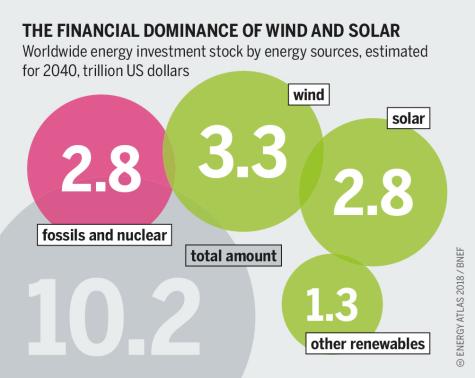
Progress in the Energy Transition – Successes and Challenges
Sustainable Deveopment Goal 7 is about ensuring ‘access to affordable, reliable, sustainable and modern energy for all.’ The sustainable aspect of this goal refers to the switch from a reliance on dirty fossil fuel energy to cleaner, greener, renewable sources. The United Nations admit that they are failing to meet their targets and are ‘woefully off track’ to reaching them by the 2030 deadline.
International public financing for clean energy in developing countries is falling year on year, even since before the covid-19 pandemic. The funding which is available is also only benefiting a small number of countries with just 19 nations receiving 80% of the financing.
Renewable energy contributes just 10% towards heating and transport. Although global renewable electricity use has increased from 26% in 2019 to 28% in 2020, current progress is insufficient to reach global energy targets.
The average renewable electricity generation cost worldwide in 2022 was $4 per kWh for solar photovoltaics and $3.3 per kWh for onshore wind. The same figure for natural gas was $5.9 per kwh.
Despite the fact that clean energy is the cheapest is has ever been, developing countries still remained locked into fossil fuel dependency. It is estimated that $1 trillion a year is needed in the energy sector for developing countries to meet their climate goals.
Renewable energies tend to have high start-up costs, and access to clean energy projects in developing countries is limited, on top of high electricity prices, the energy transition is stalling. Without affordable alternatives, phasing out dirty energy production such as coal becomes impossible.
Large wind and solar projects often need to be placed in remote locations for optimal efficiency, this requires a host of contracts and permits, and also requires powerlines and infrastructure to move the electricity to towns and cities.
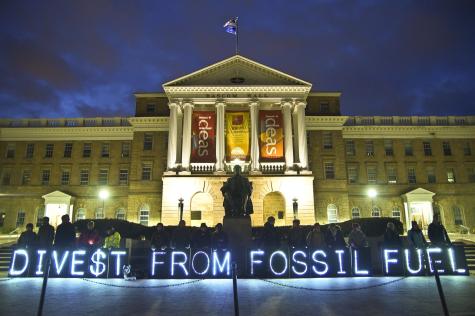
The multi-billion-dollar fossil fuel industry holds huge political weight. The U.S. spends $37.5 billion a year propping up these oil and gas giants through subsidies, tax breaks, and other loopholes. This is a huge diversion of funds which should be going into further development of the promising renewable sector. There is a huge need for increased governmental investment in research, subsidies, loan assistance, and development.
The fossil fuel industry has dedicated the last half a century to misleading the public and downplaying its contribution to climate change. The risks of global warming were identified as early as the 1970’s but to protect their own interests, climate misinformation campaigns were used to prevent a switch to renewable energy.
The disconnection between science and policy is a huge barrier to a just and timely transition. Emissions fee’s, polluters, taxes, and a ban on subsidies to polluting industries would be effective solutions to this issue.
A further barrier to the energy transition is the misconception that renewable energy is unreliable. Modern grid technologies, diverse energy sources, and improved energy storage have allowed countries to prove that 100% reliance on renewable energy is possible.
In 2017, tests performed in California under the Solutions Project confirmed that solar and wind power can actually enhance grid reliability, meaning that with grid integration, it is perfectly feasible to operate safely and reliably using renewable sources.
Our ability to limit global warming depends on us making drastic changes within the next decade. Decarbonising on a global scale is no small feat. It will involve job loss, retraining, socially just transitional policies, huge investment, and the inclusion of those who are most vulnerable to the effects of climate change.
Electrification is a monumental task that involves updating energy grids, transport and heating systems, industrial and agricultural practices, and decentralisation. An inclusive and just transition is needed, as well as governmental support, strict policies, international cooperation, and backing from energy giants.
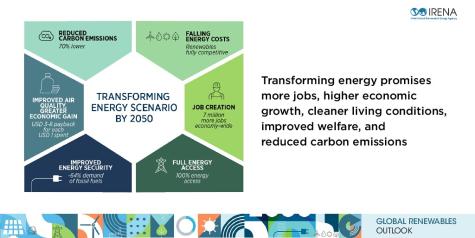
Fund Renewable Energy for a Better World
With this guide to renewable energy, Better World Info aims to increase awareness to the vast potential of the renewable energy sector and to illustrate the urgency of a global energy transition.
International cooperation and the sharing of technological advancements are essential to promote the use of renewable energy worldwide, and in turn reduce our dependency on fossil fuels. The energy transition not only offers the opportunity to mitigate the climate crisis, but also to help the poorest nations to develop faster, and to create a sustainable future for generations to come.
The upfront costs of renewable installations can seem daunting, which is why funding is a crucial component of making the energy transition a reality. Investments into renewable energy will have significant long-term gains. It is estimated that a reduction in pollution and climate related disasters will save the world a staggering $4.2 trillion per year. The cost of business as usual far outweighs the investments needed to avoid climate catastrophe.
Governments and policy makers need added pressure from climate scientists, activists, developing nations on the frontlines of climate change, and concerned citizens, we demand that the climate debt be repaid, and a greener future be possible for everyone.
“If you really think that the environment is less important than the economy, try holding your breath while you count your money” - Guy McPherson, natural resource and ecology scientist.
Author: Rachael Mellor, 05.04.24 licensed under CC BY-ND 4.0
For further reading on Renewable Energy see below ⬇️
Info on RENEWABLE Energies
- News[28]
- General Info[59]
- Organizations[36]
- SOLAR Energy[704]
- WIND Power[291]
- WATER Power[220]
- Clean Energy[66]
- Biogas, Biomass & Biofuels[252]
- Hydrogen Power[47]
- Geothermal Energy[17]
- Transitional Energy[6]
- Germany as Pioneer[15]
- Green Companies[10]
- Olympics 2000[2]
- Solutions Project[28]
- Energy Democracy
- Selected Articles[212]
- Energy Transition[143]
